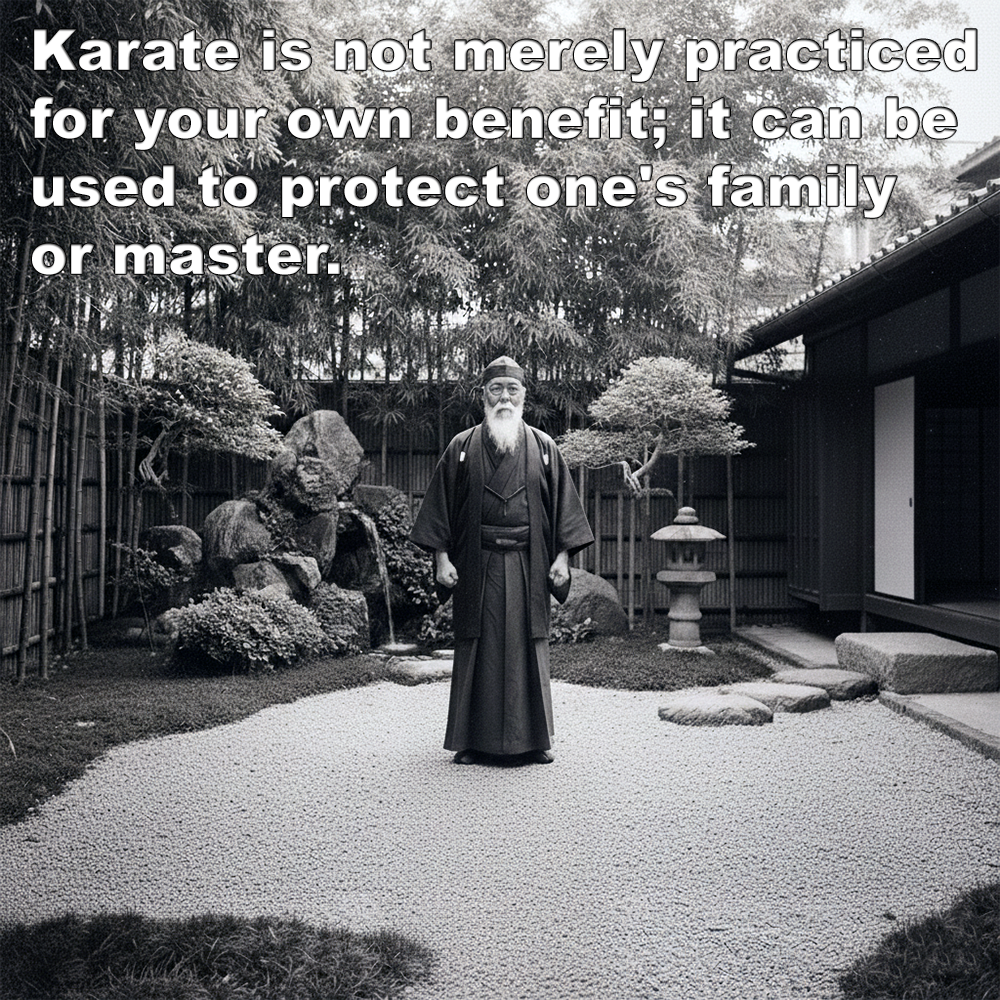
(Approx 2 minute 30 second read)
Recently, a comment on one of my articles claimed that “there is no evidence apart from hearsay and legends regarding the martial effectiveness of our Okinawan karate forefathers.”
.
An interesting perspective, but it overlooks the historical and practical evidence showing that Okinawan karate was, in fact, a highly effective fighting art.
.
While modern documentation is limited, surviving records, kata, and the professional roles of the masters paint a clear picture of the art in action.
.
One of the strongest pieces of written evidence we have is the Bubishi, a hand-copied Chinese martial arts manual circulated secretly among senior Okinawan masters, like Kanryō Higaonna and later passed to Chōjun Miyagi, Gichin Funakoshi, and Kenwa Mabuni.
.
The masters preserved and studied it carefully because these techniques were considered essential for survival. The Bubishi wasn’t legend, it was practical instruction, tested and trusted in real life, giving a theoretical and anatomical basis for techniques Okinawan masters adapted and refined.
.
Many forefathers served in positions that demanded practical skill. Sokon Matsumura, Ankō Itosu, and others were bodyguards or officials for the Ryukyu Kingdom. Their martial ability wasn’t theoretical, it was a professional requirement.
.
Choki Motobu, famously defeated a foreign boxer in Kyoto in the early 1900s using techniques from the old Okinawan system.
.
Stories like this may sound anecdotal, but they show a real-world application. Would masters of the time have created something that had no practical value? It’s doubtful isn’t it?
.
We have Anko Itosu’s letter from 1908 informing us that karate is not merely practiced for your own benefit; it can be used to protect one’s family or master. He further advises you to decide if your karate is for health or “to aid your duty” (i.e. its practical use). This is not hearsay; it’s historical evidence.
.
It’s also worth noting that many traditional martial arts around the world were primarily passed down orally, without the kind of documentation we expect today.
.
The Indian martial art Kalaripayattu, the early Capoeira in Brazil, to name just two, were all taught through demonstration and apprenticeship. The techniques were preserved in practice, not paper, and tested over generations.
.
Applying a bit of Occam’s Razor, the simplest explanation for their survival is that they worked. If they hadn’t, they would have been discarded long before reaching us. The evidence is in the continuity, the refinement, and the careful way these arts were handed down, not just in legends.
.
As an example, we have first hand information provided by the son of one of the great pioneers, Kenwa Mabuni. According to Kenei Mabuni, his father sometimes related how he had to use his skills quite frequently during his time as a policeman.
.
Kenei also states that his father sometimes worked as a referee at Kake dameshi, ‘challenge fights’ or ‘exchange of techniques’. These fights usually took place on street corners, in backyards and other public places in the evenings or at night. There were usually witnesses and every technique was permitted.
.
Even if you dismiss individual stories as legend, a consistent pattern emerges, pointing to a functional, tested system.
.
Techniques survived because they worked. Ineffective methods would have been discarded long ago.
.
So, while there may not be videos or modern studies like we demand today, the claim that Okinawan karate has no evidence for its “effectiveness” beyond hearsay doesn’t hold up.
.
Understanding context is crucial. Knowing why techniques were created, how they were applied, and what they can actually do today gives far more insight than dismissing the entire tradition as legend.
.
Okinawan karate wasn’t built for ceremony, it was built to help you survive.
.
.
Written by Adam Carter – Shuri Dojo
